1.Identification
1.1 GHS Product identifier
| Product name | heptanoic acid |
|---|
1.2 Other means of identification
| Product number | - |
|---|---|
| Other names | hexane-6-carboxyamide |
1.3 Recommended use of the chemical and restrictions on use
| Identified uses | For industry use only. Uncategorized |
|---|---|
| Uses advised against | no data available |
1.4 Supplier's details
| Company | MOLBASE (Shanghai) Biotechnology Co., Ltd. |
|---|---|
| Address | Floor 4 & 5, Building 12, No. 1001 North Qinzhou Road, Xuhui District, Shanghai, China |
| Telephone | +86(21)64956998 |
| Fax | +86(21)54365166 |
1.5 Emergency phone number
| Emergency phone number | +86-400-6021-666 |
|---|---|
| Service hours | Monday to Friday, 9am-5pm (Standard time zone: UTC/GMT +8 hours). |
2.Hazard identification
2.1 Classification of the substance or mixture
Skin corrosion, Category 1B
2.2 GHS label elements, including precautionary statements
| Pictogram(s) |  |
|---|---|
| Signal word | Danger |
| Hazard statement(s) | H314 Causes severe skin burns and eye damage |
| Precautionary statement(s) | |
| Prevention | P260 Do not breathe dust/fume/gas/mist/vapours/spray. P264 Wash ... thoroughly after handling. P280 Wear protective gloves/protective clothing/eye protection/face protection. |
| Response | P301+P330+P331 IF SWALLOWED: Rinse mouth. Do NOT induce vomiting. P303+P361+P353 IF ON SKIN (or hair): Take off immediately all contaminated clothing. Rinse skin with water [or shower]. P363 Wash contaminated clothing before reuse. P304+P340 IF INHALED: Remove person to fresh air and keep comfortable for breathing. P310 Immediately call a POISON CENTER/doctor/… P321 Specific treatment (see ... on this label). P305+P351+P338 IF IN EYES: Rinse cautiously with water for several minutes. Remove contact lenses, if present and easy to do. Continue rinsing. |
| Storage | P405 Store locked up. |
| Disposal | P501 Dispose of contents/container to ... |
2.3 Other hazards which do not result in classification
none
3.Composition/information on ingredients
3.1 Substances
| Chemical name | Common names and synonyms | CAS number | EC number | Concentration |
|---|---|---|---|---|
| heptanoic acid | heptanoic acid | 111-14-8 | none | 100% |
4.First-aid measures
4.1 Description of necessary first-aid measures
General advice
Consult a physician. Show this safety data sheet to the doctor in attendance.
If inhaled
Fresh air, rest. Half-upright position. Artificial respiration may be needed. Refer for medical attention.
In case of skin contact
Remove contaminated clothes. Rinse skin with plenty of water or shower.
In case of eye contact
First rinse with plenty of water for several minutes (remove contact lenses if easily possible), then refer for medical attention.
If swallowed
Rinse mouth. Do NOT induce vomiting. Give one or two glasses of water to drink. Rest. Refer for medical attention .
4.2 Most important symptoms/effects, acute and delayed
Harmful if swallowed, inhaled, or absorbed through skin. Extremely destructive to mucous membranes, upper respiratory tract, skin, and eyes. Inhalation may be fatal as a result of spasm, inflammation and edema of the larynx and bronchi, chemical pneumonitis, and pulmonary edema. Symptoms of exposure may include burning sensation, coughing, wheezing, laryngitis, shortness of breath, headache, nausea, and vomiting. (USCG, 1999)
4.3 Indication of immediate medical attention and special treatment needed, if necessary
FIRST AID ... Inhalation-Fresh air, rest. Half-upright position. Artificial respiration if indicated. Refer for medical attention; Skin-Remove contaminated clothes. Rinse skin with plenty of water or shower; Eyes-First rinse with plenty of water for several minutes (remove contact lenses if easily possible), then take to a doctor; Ingestion-Rinse mouth. Do NOT induce vomiting. Give plenty of water to drink. Rest. Refer for medical attention ... The symptoms of lung oedema often do not become manifest until a few hours have passed and they are aggravated by physical effort. Rest and medical observation is therefore essential.
5.Fire-fighting measures
5.1 Extinguishing media
Suitable extinguishing media
... FIRE FIGHTING /with/ Powder, water spray, foam, carbon dioxide.
5.2 Specific hazards arising from the chemical
This chemical is probably combustible.
5.3 Special protective actions for fire-fighters
Wear self-contained breathing apparatus for firefighting if necessary.
6.Accidental release measures
6.1 Personal precautions, protective equipment and emergency procedures
Use personal protective equipment. Avoid dust formation. Avoid breathing vapours, mist or gas. Ensure adequate ventilation. Evacuate personnel to safe areas. Avoid breathing dust. For personal protection see section 8.
6.2 Environmental precautions
Collect leaking and spilled liquid in sealable containers as far as possible. Absorb remaining liquid in sand or inert absorbent. Then store and dispose of according to local regulations. Personal protection: complete protective clothing including self-contained breathing apparatus.
6.3 Methods and materials for containment and cleaning up
Pick up and arrange disposal. Sweep up and shovel. Keep in suitable, closed containers for disposal.
7.Handling and storage
7.1 Precautions for safe handling
Avoid contact with skin and eyes. Avoid formation of dust and aerosols. Avoid exposure - obtain special instructions before use.Provide appropriate exhaust ventilation at places where dust is formed. For precautions see section 2.2.
7.2 Conditions for safe storage, including any incompatibilities
Separated from bases and food and feedstuffs.Separated from bases, food and feedstuffs.
8.Exposure controls/personal protection
8.1 Control parameters
Occupational Exposure limit values
no data available
Biological limit values
no data available
8.2 Appropriate engineering controls
Handle in accordance with good industrial hygiene and safety practice. Wash hands before breaks and at the end of workday.
8.3 Individual protection measures, such as personal protective equipment (PPE)
Eye/face protection
Safety glasses with side-shields conforming to EN166. Use equipment for eye protection tested and approved under appropriate government standards such as NIOSH (US) or EN 166(EU).
Skin protection
Wear impervious clothing. The type of protective equipment must be selected according to the concentration and amount of the dangerous substance at the specific workplace. Handle with gloves. Gloves must be inspected prior to use. Use proper glove removal technique(without touching glove's outer surface) to avoid skin contact with this product. Dispose of contaminated gloves after use in accordance with applicable laws and good laboratory practices. Wash and dry hands. The selected protective gloves have to satisfy the specifications of EU Directive 89/686/EEC and the standard EN 374 derived from it.
Respiratory protection
Wear dust mask when handling large quantities.
Thermal hazards
no data available
9.Physical and chemical properties
| Physical state | clear to light yellow liquid |
|---|---|
| Colour | CLEAR OILY LIQUID |
| Odour | Disagreeable, rancid odor; faint tallow-like odor when spectroscopically pure. |
| Melting point/ freezing point | -8°C(lit.) |
| Boiling point or initial boiling point and boiling range | 223°C(lit.) |
| Flammability | Combustible. |
| Lower and upper explosion limit / flammability limit | no data available |
| Flash point | 113°C |
| Auto-ignition temperature | 380°C |
| Decomposition temperature | no data available |
| pH | no data available |
| Kinematic viscosity | 3.40 cP at 30°C; 0.82 cP at 120°C |
| Solubility | In water:0.24 g/100 mL (15 ºC) |
| Partition coefficient n-octanol/water (log value) | log Kow = 2.42 |
| Vapour pressure | <0.1 mm Hg ( 20 °C) |
| Density and/or relative density | 0.918g/mLat 25°C(lit.) |
| Relative vapour density | 4.5 (vs air) |
| Particle characteristics | no data available |
10.Stability and reactivity
10.1 Reactivity
no data available
10.2 Chemical stability
Stable under recommended storage conditions.
10.3 Possibility of hazardous reactions
CombustibleHEPTANOIC ACID reacts exothermically with bases. Can react, particularly if moist, with active metals to form gaseous hydrogen and a metal salt. Such reactions are slow if the acid remains dry. Corrodes or dissolves iron, steel, and aluminum parts and containers under ordinary conditions. Reacts with cyanide salts to generate gaseous hydrogen cyanide, particuarly if moist. May generate flammable and/or toxic gases with diazo compounds, dithiocarbamates, isocyanates, mercaptans, nitrides, and sulfides. Reacts with sulfites, nitrites, thiosulfates (to give H2S and SO3), dithionites (SO2), to generate flammable and/or toxic gases and heat. Reacts exothermically with carbonates and bicarbonates to generate a harmless gas (carbon dioxide). Can be oxidized exothermically by strong oxidizing agents and reduced exothermically by strong reducing agents. A wide variety of products is possible. May initiate polymerization reactions; may catalyze chemical reactions.
10.4 Conditions to avoid
no data available
10.5 Incompatible materials
no data available
10.6 Hazardous decomposition products
When heated to decomposition it emits acrid smoke and fumes.
11.Toxicological information
Acute toxicity
- Oral: LD50 Rat oral 7,000 mg/kg
- Inhalation: LD50 Rat inhalation >4.6 mg/L
- Dermal: no data available
Skin corrosion/irritation
no data available
Serious eye damage/irritation
no data available
Respiratory or skin sensitization
no data available
Germ cell mutagenicity
no data available
Carcinogenicity
no data available
Reproductive toxicity
no data available
STOT-single exposure
no data available
STOT-repeated exposure
no data available
Aspiration hazard
no data available
12.Ecological information
12.1 Toxicity
- Toxicity to fish: no data available
- Toxicity to daphnia and other aquatic invertebrates: no data available
- Toxicity to algae: no data available
- Toxicity to microorganisms: no data available
12.2 Persistence and degradability
AEROBIC: Heptanoic acid reached 44, 61, 54, and 58% of its theoretical BOD after 2, 5, 10, and 30 days, respectively, using a domestic sewage inoculum and a heptanoic acid concn of 3.1 ppm(1). Heptanoic acid, present at an initial concn of 500 ppm, was degraded 24.6, 36.1, and 49.2% of its theoretical BOD after 72 hours, by activated sludge obtained from three different treatment plants(2). In a Warburg test using an activated sludge inoculum acclimated to phenol, heptanoic acid, present at a concn of 500 ppm, reached 27% of its theoretical BOD after 12 hours(3). A 99% BOD reduction was observed for heptanoic acid after 16 days using an activated sludge system operated under semi-continuous conditions(4). In Warburg respirometer tests using an activated sludge seed, heptanoic acid, present at a concn of 500 ppm, reached 12.8, 25.4, and 42.6% of its theoretical oxygen demand after 6, 12, and 24 hours incubation, respectively(5). A total organic carbon removal ratio of 96% was observed for heptanoic acid using a non-acclimated activated sludge and an initial heptanoic acid concn of 100 mg total organic carbon/L(6).
12.3 Bioaccumulative potential
An estimated BCF of 3 was calculated in fish for heptanoic acid(SRC), using a log Kow of 2.42(1) and a regression-derived equation(2). According to a classification scheme(3), this BCF suggests the potential for bioconcentration in aquatic organisms is low(SRC).
12.4 Mobility in soil
The Koc of undissociated heptanoic acid is estimated as 490(SRC), using a log Kow of 2.42(1) and a regression-derived equation(2). According to a classification scheme(3), this estimated Koc value suggests that undissociated heptanoic acid is expected to have moderate mobility in soil. The pKa of heptanoic acid is 4.8(4), indicating that this compound will exist almost entirely in anion form in the environment and anions generally do not adsorb more strongly to soils containing organic carbon and clay than their neutral counterparts(5).
12.5 Other adverse effects
no data available
13.Disposal considerations
13.1 Disposal methods
Product
The material can be disposed of by removal to a licensed chemical destruction plant or by controlled incineration with flue gas scrubbing. Do not contaminate water, foodstuffs, feed or seed by storage or disposal. Do not discharge to sewer systems.
Contaminated packaging
Containers can be triply rinsed (or equivalent) and offered for recycling or reconditioning. Alternatively, the packaging can be punctured to make it unusable for other purposes and then be disposed of in a sanitary landfill. Controlled incineration with flue gas scrubbing is possible for combustible packaging materials.
14.Transport information
14.1 UN Number
| ADR/RID: UN3265 | IMDG: UN3265 | IATA: UN3265 |
14.2 UN Proper Shipping Name
| ADR/RID: CORROSIVE LIQUID, ACIDIC, ORGANIC, N.O.S. |
| IMDG: CORROSIVE LIQUID, ACIDIC, ORGANIC, N.O.S. |
| IATA: CORROSIVE LIQUID, ACIDIC, ORGANIC, N.O.S. |
14.3 Transport hazard class(es)
| ADR/RID: 8 | IMDG: 8 | IATA: 8 |
14.4 Packing group, if applicable
| ADR/RID: II | IMDG: II | IATA: II |
14.5 Environmental hazards
| ADR/RID: no | IMDG: no | IATA: no |
14.6 Special precautions for user
no data available
14.7 Transport in bulk according to Annex II of MARPOL 73/78 and the IBC Code
no data available
15.Regulatory information
15.1 Safety, health and environmental regulations specific for the product in question
| Chemical name | Common names and synonyms | CAS number | EC number |
|---|---|---|---|
| heptanoic acid | heptanoic acid | 111-14-8 | none |
| European Inventory of Existing Commercial Chemical Substances (EINECS) | Listed. | ||
| EC Inventory | Listed. | ||
| United States Toxic Substances Control Act (TSCA) Inventory | Listed. | ||
| China Catalog of Hazardous chemicals 2015 | Listed. | ||
| New Zealand Inventory of Chemicals (NZIoC) | Listed. | ||
| Philippines Inventory of Chemicals and Chemical Substances (PICCS) | Listed. | ||
| Vietnam National Chemical Inventory | Not Listed. | ||
| Chinese Chemical Inventory of Existing Chemical Substances (China IECSC) | Listed. | ||
16.Other information
Information on revision
| Creation Date | Aug 10, 2017 |
|---|---|
| Revision Date | Aug 10, 2017 |
Abbreviations and acronyms
- CAS: Chemical Abstracts Service
- ADR: European Agreement concerning the International Carriage of Dangerous Goods by Road
- RID: Regulation concerning the International Carriage of Dangerous Goods by Rail
- IMDG: International Maritime Dangerous Goods
- IATA: International Air Transportation Association
- TWA: Time Weighted Average
- STEL: Short term exposure limit
- LC50: Lethal Concentration 50%
- LD50: Lethal Dose 50%
- EC50: Effective Concentration 50%
References
- IPCS - The International Chemical Safety Cards (ICSC), website: http://www.ilo.org/dyn/icsc/showcard.home
- HSDB - Hazardous Substances Data Bank, website: https://toxnet.nlm.nih.gov/newtoxnet/hsdb.htm
- IARC - International Agency for Research on Cancer, website: http://www.iarc.fr/
- eChemPortal - The Global Portal to Information on Chemical Substances by OECD, website: http://www.echemportal.org/echemportal/index?pageID=0&request_locale=en
- CAMEO Chemicals, website: http://cameochemicals.noaa.gov/search/simple
- ChemIDplus, website: http://chem.sis.nlm.nih.gov/chemidplus/chemidlite.jsp
- ERG - Emergency Response Guidebook by U.S. Department of Transportation, website: http://www.phmsa.dot.gov/hazmat/library/erg
- Germany GESTIS-database on hazard substance, website: http://www.dguv.de/ifa/gestis/gestis-stoffdatenbank/index-2.jsp
- ECHA - European Chemicals Agency, website: https://echa.europa.eu/








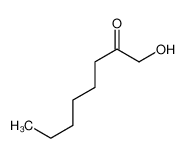

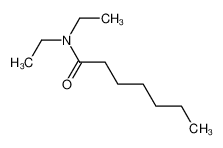







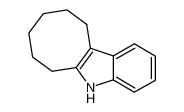




-
-

-
-
-

-
-
-

-
-
-

-
-
-
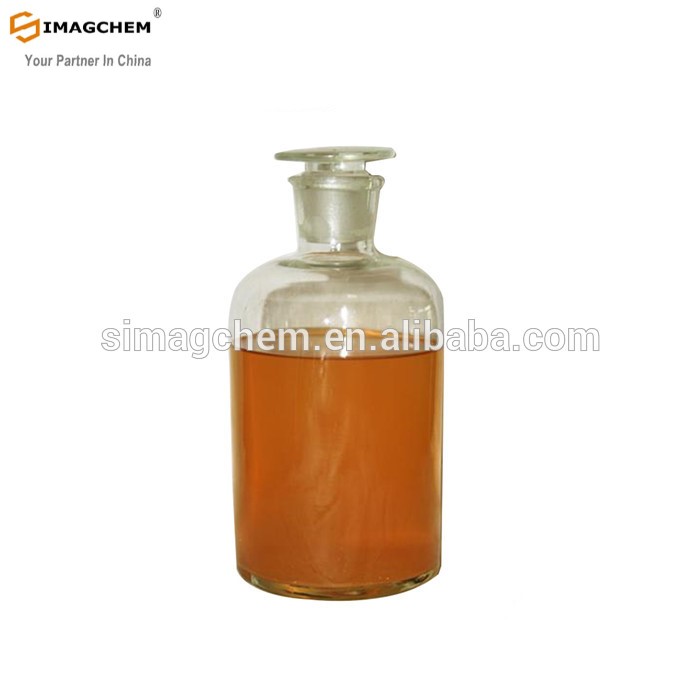
-
-
-

-
-
-

-
-
-

-
-
-

-
-
-
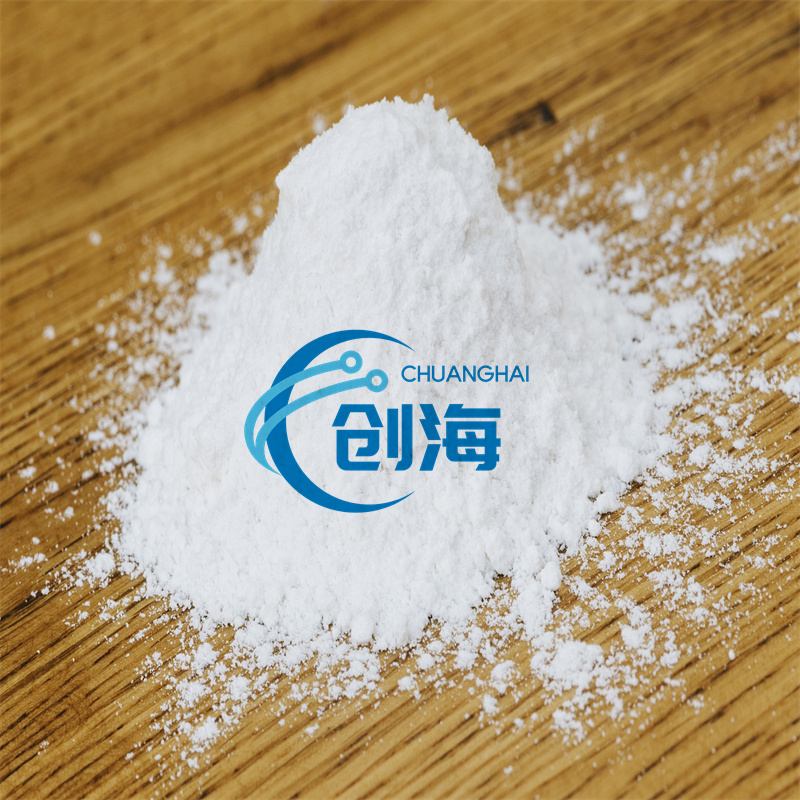
-
More Suppliers>>Baoji Guokang Bio-Technology Co., Ltd
CHINA
Purity: 99%
Lead Time: Day(s)
Price: -
Changzhou Xinxinglian Biotechnology Co., Ltd.
CHINA
Purity: 98%
Lead Time: 7 Day(s)
Price: -
Wenzhou Win-Win Chemical Co., Ltd.
CHINA
Purity: 98%
Lead Time: 3 Day(s)
Price: -
Hangzhou J&H Chemical Co., Ltd.
CHINA
Purity: 98%
Lead Time: 7 Day(s)
Price: -
Xiamen Zhixin Chemical Co., Ltd.
CHINA
Purity: 99%
Lead Time: 3 Day(s)
Price: -
Skyrun Industrial Co., Limited
CHINA
Purity: 99%
Lead Time: 7 Day(s)
Price: -
Henan Coreychem Co.,Ltd
CHINA
Purity: 98%
Lead Time: 3 Day(s)
Price: -
Hangzhou DayangChem Co., Ltd
CHINA
Purity: 98%
Lead Time: 7 Day(s)
Price: -
Hangzhou Bingochem Co., Ltd.
CHINA
Purity: 98%
Lead Time: 7 Day(s)
Price: -
CHINA
Purity: 99%
Lead Time: 3 Day(s)
Price: Min $100 /kg